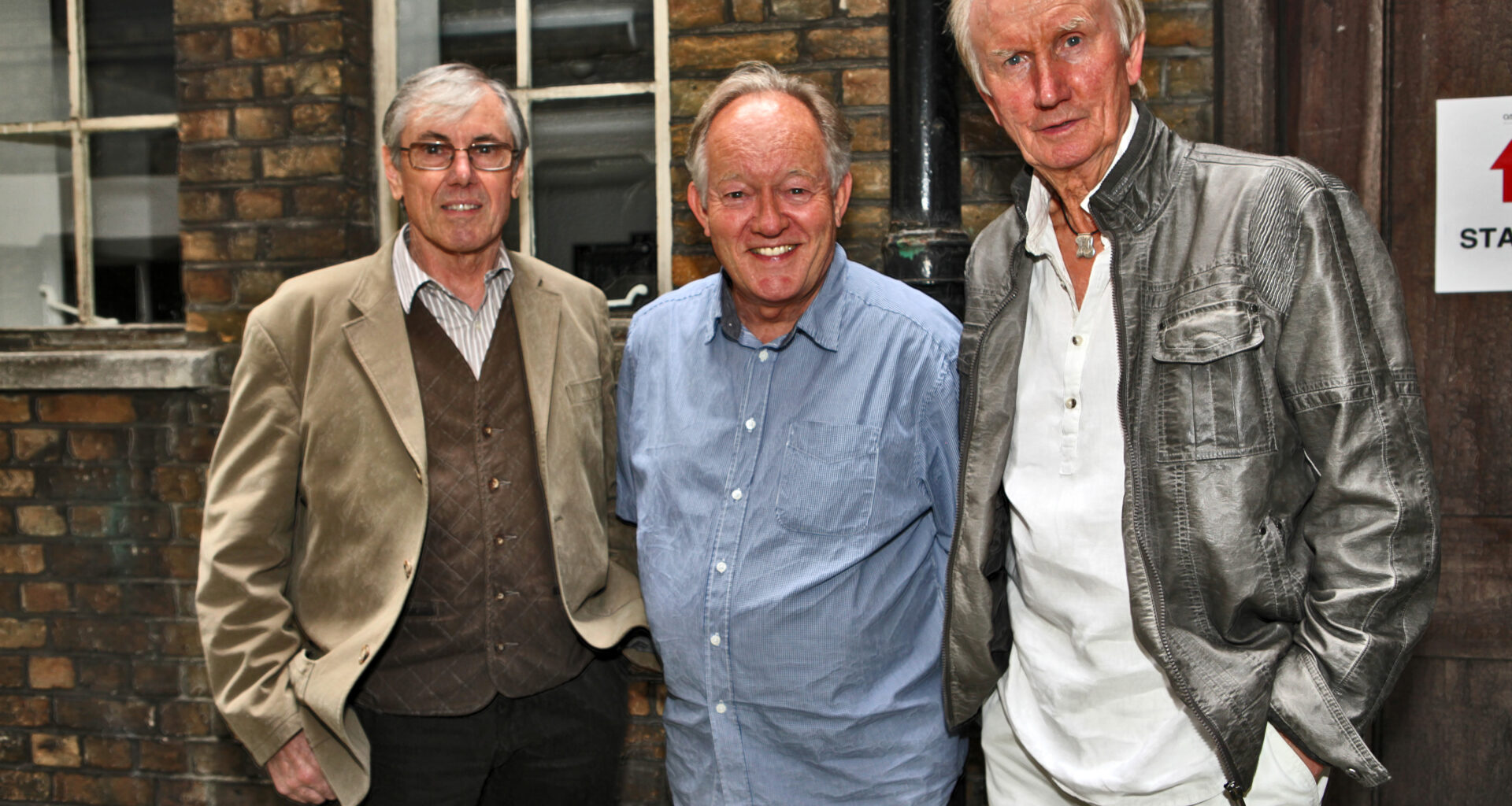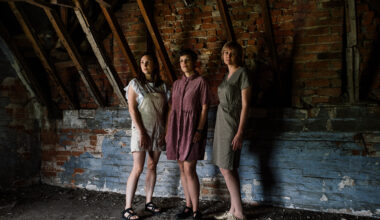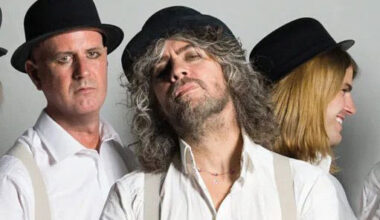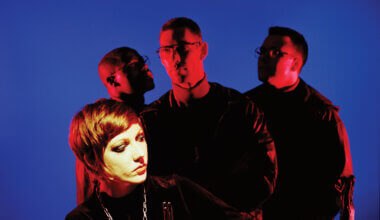Celebrating the 1970s golden age of TV themes are The Kpm All Stars, whose members Alan Hawkshaw and Brian Bennett composed classics such as ‘Grange Hill’ and ‘Countdown’. thanks to their sterling work, library music is cooler than ever
“He’s the second oldest hip hop artist around,” declares Alan Hawkshaw. The living legend of library music is referring to his long standing friend and regular musical collaborator Brian Bennett, best known as the drummer with The Shadows. “But then he’s only 79, while I’m 81,” he adds with a hint of mischief.
There’s something amusingly incongruous about hearing two fairly elderly chaps discussing their contributions to numerous rap records. It might superficially sound like something cooked up for a sketch by Harry Enfield or Armstrong & Miller, but Alan Hawkshaw, with his broad Yorkshire tones, and Brian Bennett, whose voice is softer and more southern sounding, are serious.
Both Jay Z and Kanye West, the biggest rap stars in the world, have used their work in recent years, with a Hawkshaw composition (Hank Marvin’s ‘New Earth’ from 1977) employed as the backing for the Jay Z and Beyoncé cut ‘Pray’. Bennett, meanwhile, a pianist and a composer as well as a drummer, gained a writing credit for the use of his 1979 track ‘Solstice’ on Kanye West’s ‘Lord Lord Lord’, which also featured Mos Def and Wu Tang Clan’s Raekwon. Going further back, one of Hawkshaw’s disco singles, ‘Here Comes That Sound Again’, was sampled extensively on ‘Rapper’s Delight’ by the Sugarhill Gang. At the same time, block parties were rocking to The Shadows track ‘Apache’, as re-invented by Michael Viner’s Incredible Bongo Band.
We’re not here to talk to Hawkshaw and Bennett about hip hop, though. We’re here because of a frenzy of new interest in library music, the name given to material created for use on broadcast and film mediums, and these guys are central to the story. They’re members of the KPM All Stars, a group featuring some of the key figures in library music, and the pair have just released a new album called ‘Full Circle’.
We reach them via a conference call, logging in to hear them already chatting away, discussing the prospect of a new Michael Caine film. Hawkshaw and Bennett live close to each other in Hertfordshire, and they’re planning to get together for a meal in a local pub after our interview is concluded.
The pair first met in Great Yarmouth after a mutual friend had suggested that Hawkshaw should hook up with Bennett, who was in the orchestra for a musical production in the Norfolk seaside town. Hawkshaw had worked as a touring keyboard player with rock ‘n’ roll bands for a number of years by this point, having decided that life as a printer in Leeds wasn’t for him. He rubbed shoulders with The Beatles in Hamburg, where John Lennon asked him what it was like to appear on television. But rock ’n’ roll wasn’t stretching his technical capabilities, and he was tipped off that Bennett was a great jazz drummer and told he should arrange to meet him when he next passed through Great Yarmouth on tour.
“Alan just showed up at the theatre one afternoon and we started talking,” remembers Bennett.
“Then we started playing some jazz together and you could tell we were on the same wavelength,” continues Hawkshaw. “Our friendship was forged in a matter of minutes.”
“If you fit together like that, you know immediately,” says Bennett.
The pair stayed in touch and met up again several times after Bennett had moved to London to join the orchestra for the West End show ‘Stop The World, I Want To Get Off’, starring Anthony Newley. Once Bennett had joined The Shadows in 1961 – a job that, on and off, has kept him busy for nearly 60 years – they frequently bumped into each other at gigs, both in the UK and on the continent .
Hawkshaw meanwhile established himself as a popular session player, his credits including working with David Bowie as part of Tony Visconti’s orchestra. His career took an interesting detour in 1964, though, when he was recommended to KPM, soon to become the most legendary of the library music companies. By chance, this was around the same time that someone introduced his old pal Brian Bennett to KPM executive Robin Phillips.
KPM had started life as a music publishing house right back in 1830, taking its original name from partners Robert Keith and William Prowse. By the 1960s, it was run by the Phillips family, with songwriting rather than library music as its main concern. Alan Hawkshaw, who was initially hired as a potential songwriter, pays tribute to Robin Phillips for having seen the potential of the library music arm of the company.
“It was a real breath of fresh air when Robin took over KPM,” says Hawkshaw, describing Phillips as “a great chemist” for putting together the right combinations of musicians in the studio. “Library music had been a secondary consideration, deemed as somewhat throwaway compared to commercial songwriting, but Robin changed all that. He wanted the music to be as good as the musicians he was hiring to play it.”
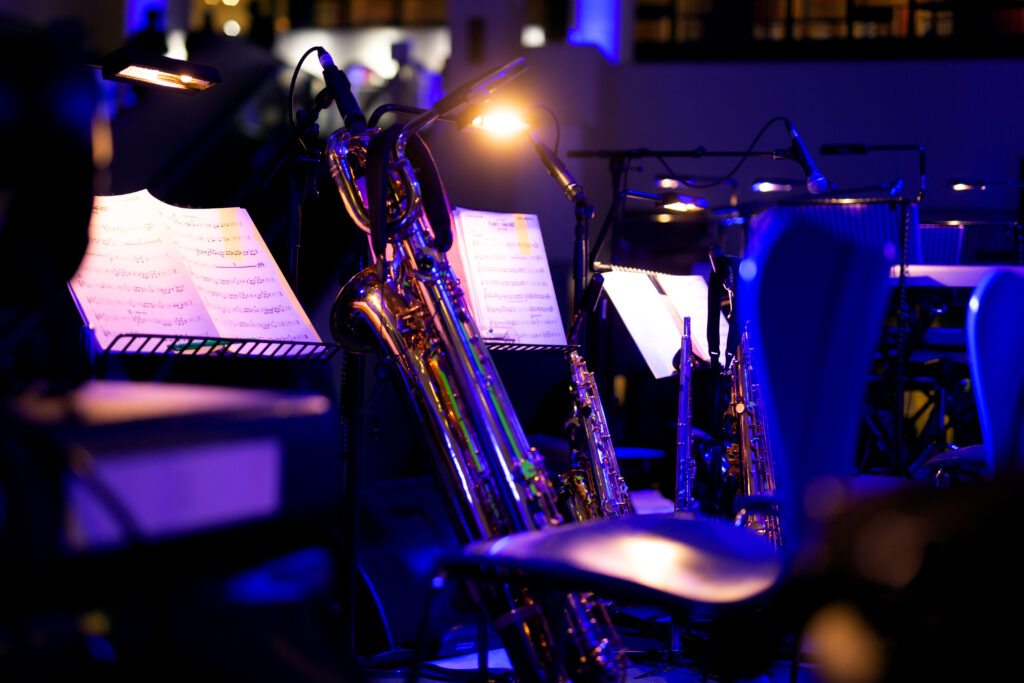
The key was to bring a new generation of artists under KPM’s wing, moving things on from the jazz groups and big bands that had been handling library music duties since the 1950s. Robin Phillips selected musicians more at home with the modern vibes of rock ’n’ roll and with funkier grooves, and he soon began embracing the emerging synthesiser technology that Hawkshaw was adding to his arsenal alongside his Hammond organ and piano. Bennett recalls that a few synths were starting to enter the market, but they were notoriously difficult to control.
“Nobody knew how to use them, but Alan was great at getting the best out of them,” he says.
This new school of thought lead to a prolific run of KPM albums, which were recognisable by their distinctive dark green sleeves and supplied to TV, film and radio industry figures rather than the general public. These records contained dozens of pieces that went on to become classic television theme tunes in the 1970s and 1980s. One of KPM’s main in-house composers was Keith Mansfield, who was responsible for penning the title music for sporting shows such as ‘Grandstand’ and ‘The Big Match’, as well as the BBC’s Wimbledon tennis coverage.
Mansfield often used Hawkshaw and Bennett as musicians on his sessions, but the old friends also became composers in their own right. Bennett was responsible for the ‘Rugby Special’ theme among many others, while Hawkshaw chalked up a succession of distinctively funky workouts that helped to define the age. His cheeky reggae effort ‘Chicken Man’ is better known as the theme to ‘Grange Hill’, while the decadent sounding ‘Studio 69’, a bongo-slapping and brass-rasping 12-bar blues topped off with Hawkshaw’s snazzier-than-ever Hammond organ skills, delighted millions every week as the opening music to ‘Dave Allen At Large’.
Hawkshaw counts the latter as one of his two all-time favourite compositions, the other being the easy listening flavoured ‘She’, written in collaboration with Keith Mansfield. Even the Hawkshaw and Bennett tracks that didn’t get high profile usage at the time are amazing examples of effortless funkiness. ‘Name Of The Game’, for example, which the pair wrote together, is a low-slung groove laden with atmosphere.
It’s perhaps not surprising that many simply assumed that music such as ‘The Champ’, a Hawkshaw track issued under the name The Mohawks (“The band that never was,” he says), had been made by flares-wearing black musicians somewhere in the US rather than these respectable looking gents from Hertfordshire. He laughs when he recalls being told by a music industry insider that The Mohawks were definitely from Chicago.
‘The Champ’, another Hammond-powered affair with an instantly recognisable three-note motif, has not only become a dancefloor staple in its own right, but has been plundered by other artists so extensively that whosampled.com lists an astonishing 663 different subsequent uses of the track. Successive generations of hip hop artists, from originators such as Afrika Bambaataa, Eric B & Rakim, KRS-One and Ice Cube to new schoolers like Frank Ocean and Nicki Minaj, have appropriated it over the years. And while there’s no scientific way of proving this 100 per cent conclusively, there is a strong argument that ‘The Champ’ is the most sampled song of all-time, a claim that Hawkshaw is not shy about agreeing with.
It’s not hard to see what appeals to other artists about this music. While the arrangements are not exactly sparse, they’re definitely economical, leaving plenty of room for additional elements to be incorporated on top. More importantly is the feel of the music itself. There’s a relaxed charm that seems to come from the fact that they are self-contained one-offs, not part of a clearly mapped out career trajectory of a band. And despite being functional in their origins, there’s a real sense of the music being played for the sheer fun of it.
While Bennett puts this down to “the joy of having the best musicians, people who know what they’re doing”, Hawkshaw sheds some further light on the process.
“People don’t know that we used to be under a lot of pressure when we made those records,” he says. “We were all living day-to-day and had loads of other things going on. It was like juggling eight balls at the same time.”
Hawkshaw believes that the secret of getting the right vibe on the tracks was having put in the work beforehand with the writing, but also leaving a little space on the score sheet for the great musicians they’d bring in to throw their own creativity into the mix.
“You get what you pay for with the top musicians,” he says. “But part of it is making sure you please them and respect what they do. The tracks had to be done carefully, but the ad libs and the solos are quite often the best bits. We didn’t know what we were going to get, but they turned out to be a real delight.”
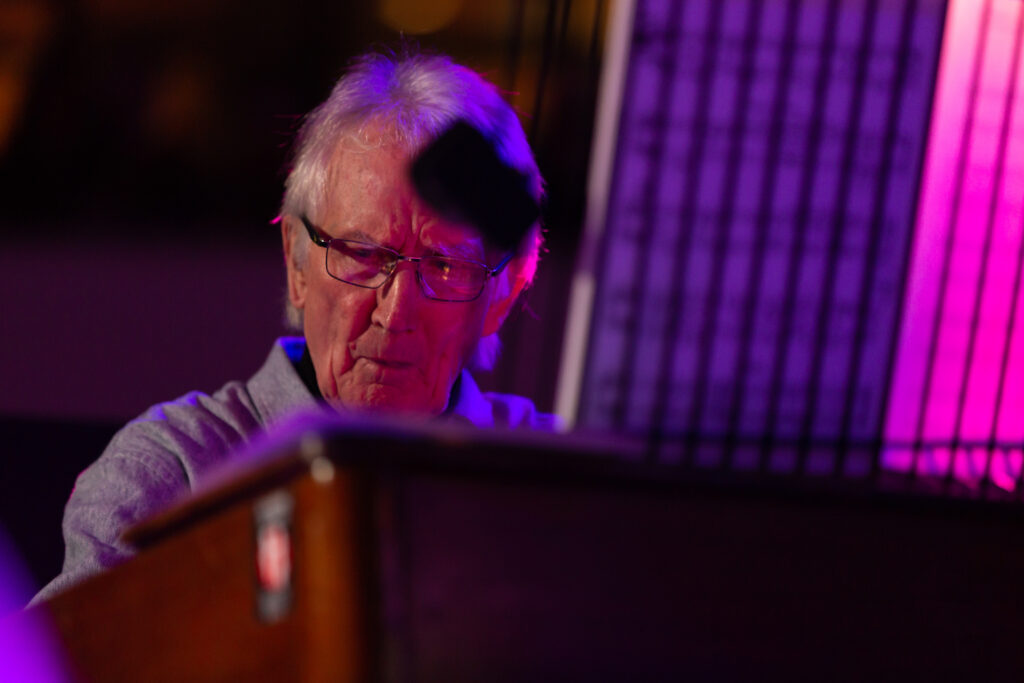
Although Hawkshaw and Bennett are happy about the renewed interest in library music (Bennett cheerfully relates that he saw an early pressing of a KPM album on the internet recently for £100), there’s very much a business-as-usual feel to the way they discuss their musical activities. It’s an air that pervades the creation of ‘Full Circle’, a new collection of 12 tracks created by the pair as an album in its own right, but made very much in their classic style.
“It’s got a bit of everything, but this time we didn’t have a specific brief,” says Bennett.
Fans of their original work won’t be disappointed, with tracks like the tumbling groove of ‘Reignited’, the strolling blues exploration ‘Midnight Jazz’, and the creeping atmospherics of ‘On The Nile’ clocking in somewhere between easy funk and easy listening. This time, at least, the relaxed mood is genuinely as a result of less pressure than the old days.
“It’s more like juggling two balls rather than eight these days,” quips Hawkshaw.
Given that ‘Full Circle’ is just another example of the kind of work Hawkshaw and Bennett have mastered over five decades, you can perhaps understand their apparent nonchalance. On the other hand, the relatively rarer prospect of them joining the KPM All Stars for a live show at the British Library a few days after our chat has certainly got them excited. Hawkshaw says he’s relishing the opportunity to play the biggest and most celebrated tunes from the extensive KPM catalogue in front of a receptive audience.
“Like being a fan of anything, it’s such a great thing for people to see you actually performing live in front of their eyes,” he notes.
Indeed, come the Saturday night of the show, the looks of glee on the faces of the capacity crowd at this august institution next to London’s St Pancras station confirm Hawkshaw’s hunch. Tickets are “like gold dust” according to the event’s press officer, having sold out long ago. Once inside the hall, it becomes clear that every vantage point, including balconies and staircases, are packed with an eager audience awaiting the arrival of the musicians.
The KPM All Stars come onstage promptly at 8:15pm and the celebratory air reaches fever pitch as the grand masters of library music emerge. The band is embellished with a prodigious brass section and led by Keith Mansfield, who takes them through some of their sporting theme tunes. The sight of Alan Parker, a guitarist who rubbed shoulders with David Bowie and Jimi Hendrix as a session man, gets plenty of cheers, but it’s the appearance of Hawkshaw behind the Hammond organ that is the undisputed highlight of the first set. “He used to be my keyboard player and now I’m his warm up man!” jokes Mansfield.
Taking up residence behind his keyboard stage left, Hawkshaw delivers a string of his best-known numbers, from ‘The Champ’ and an opulent sounding ‘Girl In A Sportscar’ to another irresistible organ-driven Mohawks classic, ‘Beat Me Till I’m Blue’. When the second half of the evening’s entertainment kicks off with ‘Chicken Man’, a massive cheer goes up as those old enough to recall it – which is most of us, to be frank – are instantly transported back to the days of Tucker, Zammo and Roland.
Hawkshaw is clearly enjoying himself, jesting with the crowd about the theme from ‘Countdown’. He admits that the rumours he’d penned the famous tick-tocking track on the lavatory were true and teasingly points out its earning potential given it had been on TV five times a week for 35 years by adding, “Well, it did take me nearly an hour to write!”.
Another of the KPM All Stars, John Cameron, takes over the lead duties for a while and declares that he’s also had a track sampled by a major rapper, CeeLo Green. Unfortunately, the Gnarls Barkley star decided to use it for a considerably less lucrative free download. Cameron even delivers a tongue-in-cheek rap, which would be a diss track if it weren’t so good natured, as a reply to those who have sampled his work.
By the time the show concludes, with Hawkshaw, Bennett and co returning to the stage for a second run through the bombastic ‘Studio 69’, there are smiles all round. There are lots of sore feet too, the result of the kind of energetic frugging that many of those here evidently haven’t been involved in for a fair while.
Upstairs from the main hall in the British Library, there’s an exhibition of KPM artwork and master tapes. The new owners of the KPM 1000 Series, EMI Music, have digitised the entire catalogue of tracks and donated the original tapes to the library’s archives. The man responsible for curating this project is David Hollander, the leading library music authority.
When it comes to library music, Hollander wrote the book. Quite literally. ‘Unusual Sounds: The Hidden History Of Library Music’ was published in April last year via Anthology Editions. It’s a comprehensive and exhaustive examination of the genre, tracing not only the history of KPM, but many other but lesser-known companies operating in both Europe and the US.
Now based in Texas, Hollander developed a keen ear for library music while growing up as a child actor in LA. He was apparently shy about watching himself on the screen, so he’d hide in an adjacent room when his family gathered to witness his latest TV appearance. As a result, he quickly became attuned to the sonic vocabulary used by the programmers. Since then, he’s worked as a screenwriter and producer for everything from the CBS legal drama ‘The Guardian’ to kids’ cartoons, honing his knowledge of library music on the way.
David Hollander’s enthusiasm for his subject spills out in every direction, as an hour in his company on the day of the KPM show testifies. He explains he’s made it his mission to unearth and nurture catalogues that are lying dormant, having often been purchased by larger companies who are completely unaware of the creative goldmines they are sitting on. Hollander has compiled a fascinating album (again called ‘Unusual Sounds’) to accompany his book and has also been involved in reissuing uncovered glories from the Italian scene. He explains that specific geographical areas of excellence in library music, like the UK, Germany, France and Italy, have very much their own flavour of library sounds.
“People can’t help but impart a regional twist to what they do,” he says. “Italian library music really sounds Italian, even when they’re doing a James Brown cover. I like that about it, it’s one of the quirks that makes it really interesting. There’s quite a lot of French library music at the moment that’s languishing in archives, but that’s not unusual. A lot of library music isn’t looked after very well and that’s something I’m actively working on.”

Hollander says he was inspired to start Intermezzi, his new label for Italian re-issues, after hearing the vintage Italian library music used to soundtrack ‘Curb Your Enthusiasm’. He points to the Italian label CAM, who made music for legendary filmmakers such as Fellini, but whose archives have never been released to audiences in the US.
“They are really like the KPM of the Italian library music scene,” he declares.
Because the records produced by many libraries were only made for industry insiders to preview, they were extremely limited runs, in some cases as low as 100 copies. As well as making major labels like EMI aware of these untapped resources, Hollander has had to put in plenty of forensic work in tracking down the music and its makers. Some labels don’t have master tapes or even copies of all their albums, while many of the artists seem to have dropped out of music altogether and gone to live in obscurity in different places around the world.
Every aspect of the library music world appears to fascinate David Hollander, not just the music itself, but the titles, the artwork and the stories behind the records. He’s convinced that the success of Keith Mansfield’s ‘Teenage Villain’, which he believes has been used on TV and in films more than any other piece, lies not only in the fact it’s fantastic music and has plenty of stops that make it easy to edit to, but also because the title of the track instantly sold itself to programme makers.
The artwork of library music releases is often a law unto itself too. “There’s really nothing else like it,” notes Hollander. He relates the story of one Italian label, which shall remain nameless, whose boss enlisted his wife to create their covers using crayons. “They look like the kind of thing you’d see on a prison tattoo,” he laughs.
He’s certainly more impressed by the beautiful photographs that grace the sleeves of the Sonoton label, whose owner also composed and played all the music released on the imprint. Never mind DIY culture, this is DIAY (Do It All Yourself) culture.
Having seen library music edge back into prominence through the popularity of the likes of Alan Hawkshaw and Brian Bennett, Hollander says there are other forgotten worlds of sound out there that are still yet to emerge. As for the happy-go-lucky vibe we discussed earlier with Hawkshaw and Bennett, Hollander has slightly more concrete theories. Because many of the artists were operating in relative secrecy and working under pseudonyms, the pressure of expectation was much reduced.
“It was something that, once they’d finished, they could just walk away from,” he explains.
Mind you, even that is something that the new-found popularity and coolness of library music is starting to change. There was a time when the likes of Jimmy Page shied away from any association with the industry – Hollander says there are plenty of stories of the Led Zeppelin guitarist’s contributions to library tracks as a session man, although no actual proof remains – but quite the opposite is happening now.
“These days, there are musicians from well-known bands wanting to make library music under their own names because it’s something they think is cool to be linked with,” he laughs.
Quite right too. To quote that Hawkshaw and Bennett album title, it looks like we’ve come full circle.
Alan Hawkshaw and Brian Bennett’s‘Full Circle’ is out on Be With. For more details see bewithrecords.com. David Hollander’s ‘Unusual Sounds: The Hidden History Of Library Music’ is published by Anthology Editions and his ‘Unusual Sounds’ companion album of library tracks is also out on Anthology Recordings
